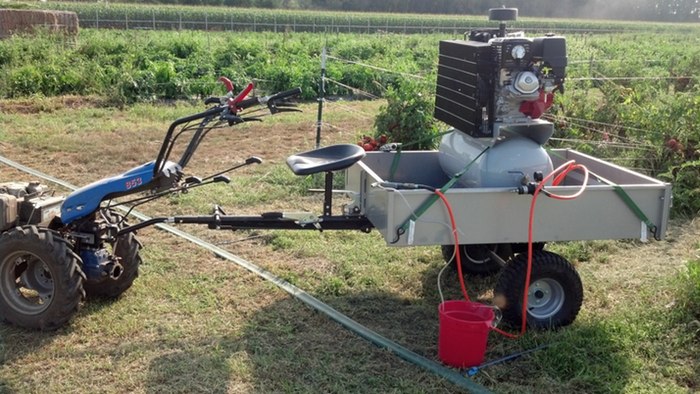
Although there are various other types of eco-friendly weed control, organic farm workers often end up doing what most of us do in our backyard gardens – bending down and yanking weeds out by hand. Thanks to the relatively new process of "abrasive weeding," however, that may not always be necessary. As an added benefit, crops could be fertilized and weeded in one step.
The process works best on transplanted crops – in which the "good" plants are bigger and more mature than the weeds sprouting around them – and in conjunction with sheets of plastic mulch. As long as they're of a species in which the growing points are located above-ground, the weed seedlings are killed when blasted apart by the grit.
That grit can be made from almost any organic material, including nut shells, corn cobs or other agricultural waste. As noted by the Illinois team, however, fertilizers such as soybean meal could also be used. This would allow farmers to combine weeding and fertilizing in one pass, although "it is still unknown whether the fertilizer would be available for plant uptake within critical windows."
In the Illinois trials, tomato and pepper plants did sustain some superficial collateral damage, but it didn't affect their marketable fruit yield. That yield was along the same lines as is achieved when weeding by hand, and was 33 to 44 percent higher than that of non-weeded control crops.
The grit was applied using a sand blaster connected to an air compressor, pulled down rows of plants by a walk-behind tractor – it can be seen in use below. Wortman and his team, however, have since developed a dedicated device which is now undergoing testing.
A paper on the research was recently published in the journal Crop Protection.

 Previous page
Previous page Back to top
Back to top







